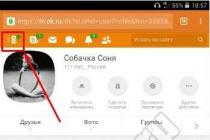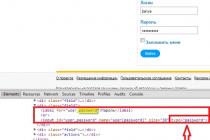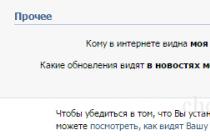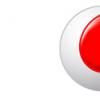SF-Express - Large Chinese postal company in Shenzhen, is in 2nd place after China Post by the volume of shipments. SF-Express was established in 1993 in Shunde City, China. SF Express owns a fleet of 31 cargo aircraft, of which 13 are owned by a subsidiary of SF Airlines. In addition, the company has 10,500 branches in China alone and more than 260 offices worldwide.
With the help of SF Express AM, parcels are sent most often from Joom, Pandao, AliExpress. Chinese sellers use the SF Express delivery service to deliver lightweight goods to Russia and designated countries, which are sent in small packages (weighing up to 2 kg). There can be both registered (with a track number) and unregistered.
The service sector of SF Express includes such countries as: Russia, Poland, Belarus, Ukraine, the Baltic countries, as well as Sweden, Finland and Norway.
SFE Express AM tracking is the name of the airmail shipping method ( Air Mail) by SF-Express. SF-Express AM Joom is the most popular delivery service from China Joom store.
SF-Express shipments have a 12-digit track number, also recent times SF-Express tracks shipments with numbers like UL070350581EE, PBAE590221844, RA423372156FI, RS024263390EE
Tracking SF eParcel Registered in Russia and Belarus
SF eParcel Registered Shipments can be tracked all the way, from our warehouse in China to your post office.
SF Express tracking in Russia works on our service, where the names of all statuses and destinations are presented in Russian. You can also find out the approximate delivery dates to your branch based on the statistics of previously delivered SF Express parcels.
Tracking numbers are always 12 digits long and look like this: 030002979411, 460462684604, 959634273304, 994566062183 .
Until December 2017, a website from SF-Express worked, where a new track code in the international format RA482790357FI or UK007210499EE was shown for registered items. Since December 2017, the site has stopped working and now it is impossible to find out the tracking number that will work in Russia or Belarus. It remains only to wait for the notification from the mail.
Tracking registered SF-Express parcels will work on the territory of the country of destination, but you will not be able to receive the parcel at the branch using the SF-Express track code.
SF Express Ukraine Tracking
After arriving on the territory of Ukraine, the parcels are transferred to the NovaPoshta company. You can track the further movement of the parcel both on our service and on the official website of NovaPoshta.
SF eParcel Non Registered Tracking
SF eParcel Unregistered Small Packet is the most economical delivery method, including partial tracking of the movement of a parcel, only within China. The final tracking point is the Russian Sorting Center (the last tracking status indicates that the parcel has arrived in Moscow).
Further, the shipment is forwarded for delivery to the "Russian Post" without further traceability. After arriving at Postal office, the recipient will be notified of the need to receive a small packet.
Remember that using the SF-Express tracking number, Russian Post employees will not be able to find or give you your shipment. The number of the items by which you can find the parcel will be known only after you have been issued and delivered a postal notice.
SF Economic Air Mail tracking
Faced with the delivery of SF Economic Air Mail, you probably have a question, what kind of delivery to Aliexpress? How to track a parcel of SF Economic Air Mail with Aliexpress by track number?
SF Economic Air Mail is a popular way to ship orders from trading platform Aliexpress used by sellers to deliver inexpensive items. The largest international transport company SF Express is engaged in logistics and delivery.
Movement data mailing can be obtained using our mail tracker, which collects information from the official website of SF-Express, and from the website of the Russian Post.
Delivery of postal items to the country of destination most often occurs without delays. In Russia, S.F. Express are delivered by Russian Post, in Ukraine - by UkrPoshta, in Belarus - by BelPoshta.
Where to receive SF Express parcels
Let's figure out where to get SF Express. Registered and non-registered SF Express shipments are delivered to your branch of the Russian Post. After the parcel arrives at the Post Office, you will receive a notification at mailbox by which the parcel can be received.
If, after receiving the status of the arrival of the parcel on the territory of Russia, Ukraine, Belarus, several weeks or even months have passed, and the parcel has not been received, you must contact the seller in the store where you bought the product for a refund.
Contacting SF Express will not help in any way, since the Russian Post is engaged in the delivery of the parcel across the territory of Russia, which, in turn, will not be able to help with the search for an unregistered item.
SF Express is not tracked for a long time
Tracking of most of the SF-Express parcels after arriving in Russia gets stuck with the status "Arrived at the destination country"or" Arrived in the country of destination. "Let's figure out what this status means and how the parcel is delivered further, to your post office.
SF-Express delivers a parcel from China to a distribution center in Finland, Latvia or Estonia, where it transfers the parcel to Finland Post, Latvian Post or Estonian Post, respectively. In this case, the parcel's track number changes to a new, international format R..FI, R..EE, but the new number cannot be recognized in any way.
These postal services deliver the parcel to Russia, where the parcel is transferred to the Russian Post, goes through the import procedure, customs and is sent to your post office.
Tracking for unregistered SF-Express parcels does not work, and therefore the last status of the parcel remains "Arrived in the country of destination". You need to be patient, keep track of the order protection time and wait for a notification from the mail.
Do not waste your time trying to find a parcel in the mail using the 12-digit track number of SF Express AM, Russian Post can only find a parcel by an international departure number, which is not known before receiving a notification. By the last name, among hundreds of parcels, no one at the Post office will either look for it and will not have to.
SF E-Parcel + Shipments
Along with full tracking of the package from seller to buyer, SF eParcel + provides SMS delivery notification and delivery time changes upon request from buyers or sellers
What is the city of Shilin-Meng, Xilingol Meng?
Often when tracking SF-Express from Joom, Pandao, and Ali, you will see the status "Parcel arrived at Shilin Meng distribution center", also known as Xilingol Meng. This is the name of a sorting center in the SF-Express logistics network, located in Shilin Gol, Inner Mongolia, China.
What does it mean that the package has arrived at the Shilin Meng distribution center?
This means your shipment is in sorting center, where it is scanned, is queued for shipment along with other parcels next to your country. This status is most often seen when tracking an order in Joom or Pandao.
Contacts SF Express in Russia
If you have a question about SF-Express registered mail tracking, please call hotline: +8 (800) 505-63-18. More information can be found on the official website www.sf-express.com.
history of the company
Wang, the son of a Russian translator of the Chinese Air Force's People's Liberation Army, saw an early opportunity to trade across China's border with Hong Kong, shortly after former chief leader Deng Xiaoping made his famous visit to Shenzhen and set the country on a path of economic reform. Although Wang's family immigrated to Hong Kong when he was a child, he later returned to China to start a business, first in a small town in Guangdong province and then in Shenzhen.
“When S.F. started delivering packages in the 1990s, it was an illegal business called black delivery, Wang said in a 2011 official interview with People's Daily, the only interview he is known to have provided. in accordance with the rules, we will be fined if postal officers find out about our operations, so we had to covertly process the transfers. "
SF Express was founded in 1993, providing services between Hong Kong and Guangdong province.
In January 2010, SF Airlines began scheduled cargo services with 41 aircraft to provide services such as one-day and next-morning delivery.
SF Express has opened at least 500 Heike (Chinese: 嘿 客) stores in all Chinese provinces - excluding Tibet and Qinghai. In 2014, the company planned to open 4,000 Heike stores across the country.
Hong Kong is unique for its blend of urban sophistication with the nearly untouched nature of its outlying islands and many national parks.
Therefore, both lovers of a typical city rest in the form of shopping and non-tiring excursions, as well as those who prefer exclusively active rest, strive here. In Hong Kong, you can walk along mountain trails, lie on an idyllic beach or climb into remote places where human feet rarely step. Choose any of the islands and go explore the one you like the most!
.jpg)
Cheung Chau Island
The first thing that all visitors notice when arriving at Cheng Chau is the complete absence of high-rise buildings and cars. However, the island has good infrastructure with schools, a hospital, hotels and a library, but most importantly - fishing, whose roots go back to the Ming Dynasty (1368 - 1644).
Proof of this is the multitude of colorful fishing boats lining up along the pier and filling the harbor. Local attractions include the Cheung Po Tsai Cave (known as the Pirate Cave), the Chi Ma Hang family path, ancient inscriptions carved into the rocks, and the Pak Tai Temple.
Rock carving
Scientists believe that these amazing inscriptions were carved into the rock about 3000 years ago. The cliff overlooks the ocean and is located below the Warwick Hotel in East Chen Chau Bay, less than ten minutes' walk from the ferry pier. In 1982, the rock was declared a national monument.
Pavilion Beitiao
Perhaps the best place for panoramic shooting of the landscapes of Cheng Chau is this pavilion, built in the traditional Chinese style and from which you can see most of the island. It is located at one of the highest points of Cheng Chau and just a short walk from the ferry pier.
Cheung Po Tsai Cave
The cave is located at the southwestern end of the island, about 45 minutes walk or 20 minutes by boat, and is one of the most famous landmarks on the island, so it is not difficult to find it - there are noticeable signs everywhere. The mysterious cave is believed to be the place where the famous pirate of the 19th century named Cheung Po Tsai kept the goods looted by himself and his charges.
Legend has it that the pirate commanded two thousand sea bandits who tirelessly hunted in the seas on more than half a thousand junks. However, no one has discovered the treasure so far. If you don't find them either, then at least admire the beautiful views of the coastline from this place. Note: The cave is usually slippery and muddy, so bring non-slip shoes and a flashlight if you are thinking of looking for treasures.
Chi Ma Hang Family Path
In the southeast of the island, there is the so-called Chi Ma Hang Family Trail, often called the Little Wall of China. In fact, this is not a wall, but a road several hundred meters long, built of white stone blocks with railings. While walking along it, you can enjoy the picturesque view of various rock formations. By naming them, the locals seem to have been exercising their imaginations, for example, one of the rocks was nicknamed "The Head". However, if you wish, you can actually see her eyes, nose and ears. It is a convenient road and is definitely worth a walk.
Pak Tai temple
Built in 1783, Pak Tai temple is located near the ferry pier, if you go to the left, and is dedicated to the god of the sea, who is revered as a protector from all troubles among the local fishing population. The building has traditional Chinese architecture with beautiful ceramic tiles on the roof, as well as depictions of animals such as stone lion statues.
In the temple, there are large images of two generals Tao, as well as the legendary brothers “thousand-eyed Li” and “ear of the auspicious wind,” who are said to be able to see and hear absolutely everything even from a distance. This temple is the centerpiece of an annual event known far beyond Hong Kong, the Bun Festival (or Ching Chu in Cantonese), held every spring.
Tin Hau Temple
Cheng Chau has several temples dedicated to the fisherman goddess Tin Hau. For example, one is a hundred meters northwest of Pak Tai Temple, another is located north of Morning Beach and the third is in the southwest of the island. Fishermen go to these temples in search of protection and fortune before heading out to sea.
Good to know
a) Visitors can take a free map of the island at the ferry pier
b) There are no cars or even motorcycles on the island, except for the police and firefighters. And even their vehicles are much smaller than usual, as they were specially made for the narrow streets of Cheng Chau.
Lantau Island
Lantau Island is a unique place where old and new are perfectly combined. Most of it is completely rural, so Lantau, with its highest mountain, the Lantau Peak, with a height of over 900 meters, is considered a paradise for "green" tourists.
In addition, Lantau is home to Hong Kong Disneyland, the Ngong Ping 360 Cable Road, the famous giant Buddha and the traditional Tai-O fishing village.
Giant buddha
Opened in 1970, Po Lin Monastery is home to three large gold (more precisely gilded) Buddha statues, as well as a 34-meter 250-ton bronze Buddha statue, the so-called Tian Tan Buddha.
This is the world's tallest open-air bronze statue of a seated Buddha attracts about a million visitors a year. The statue is so large that it can be seen from afar.
Hong kong disneyland
Hong Kong Disneyland is modeled after the original American Disneyland with some region-specific features. This children's paradise with an area of more than 126 hectares houses a theme park with four "lands", inhabited by all the characters of Disney cartoons, and two themed hotels.
Ngong Ping 360 Cable Car
Ngong Ping 360 is one of the most popular tourist attractions in Hong Kong. The road is located in the part of Lantau called Tung Chung and includes the cable car system itself and the cultural and commercial center. During the trip, you can see the scenery of the South China Sea and the Tung Chung Valley.
The village at the top of Ngong Ping provides an opportunity to learn about the traditions of Chinese heritage. It is close to other attractions such as Po Lin Monastery, Giant Buddha and a fishing village, so you can spend a full day exploring the area around Ngong Ping 360.
Lamma island
The proximity of Lamma Island from Hong Kong - about half an hour by ferry - makes it a great place for a relaxing break away from the bustling city.
The means of transportation on Lamma is a bicycle - there are no cars, and all the buildings are low-rise.
It has clean air, golden sandy beaches, green hills, pretty villages, inexpensive restaurants serving the freshest seafood and many scenic walks. From the top of a small hill on Hung Shing Yeh Beach, there is an observation deck from where you can admire amazing views. Family-run shops, uncrowded bars and fine restaurants, some even built over the water, will make your trip to Lamma Island a memorable one.
Two of the most popular places to visit on the island are villages Juice Kwu Wang(Sok Kwu Wan) and Jung Shu Wang(Yung Shue Wan). It is there that gourmets from all over the world flock to taste seafood in one of the many restaurants that stand on stilts above the waters of the bay. Fresh crabs with chili sauce, prawns with garlic, fried calamari and steamed fish with ginger and green onions and hundreds of other delights are all cheaper at Sok Kwu Wan than in Hong Kong. And at Yung Shue Wan, which also has plenty of Western-style restaurants and bars, it is worth shopping along the main street for crafts, souvenirs and more practical items made by local craftsmen. The village also has the indispensable Tin Hau temple, built over a hundred years ago.
Walking between these two villages is a great way to discover this green haven from the hustle and bustle of the city, while enjoying the views of the small coves and the abundance of greenery. An equally beautiful landscape can be seen if you walk around the Stenhouse Mountain in the south of the island.
There is a beach between the two villages Sham Wan is the only place in Hong Kong where green turtles regularly lay eggs. Sunbathers regularly come to Hung Shing Yeh and Lo So Shing beaches.
Sok Kwu Wan Fishing Village
Do you want to travel back in time and see how fishermen lived a long time ago? Then there is no better place for that than Sok Kwu Wan Fishing Village. Here are collected real fishing junks, traditional dragon boats, rafts and fishermen's dwellings, displays and stands with stories about traditions and folklore. Visitors can learn and appreciate the heritage and living culture through interactive games and demonstrations, and buy souvenirs made by the village's fishermen.
How to get there: Ferry from Central Ferry Pier 4 to Sok Kwu Wan
Peng Chau Island
Located between the islands of Hong Kong and Lantau, it is a small and quiet oasis for a relaxing break. It is pleasant to stroll around here, look at old temples and spend time with a delicious seafood lunch.
There is a pretty village in Peng Chau, and in just half an hour you can walk to the Phoenix Pavilion (Fung Peng) on Finger Hill, which is 95 meters high. It is an excellent vantage point from which the entire panorama of Hong Kong can be seen, including the world's longest suspension bridge for cars and trains: the Tsing Ma Bridge, which connects the islands of Tsing Yi and Ma Wan.
Temple of the Seventh Sister
Among the interesting places on the island is the temple of one of the beloved deities - Temple Seventh sisters(Seventh Sister Temple). To get to it, you need to turn left from the ferry terminal and walk along Peng Lei Road until you see an old match factory. Three temples are visible from here, namely Kwan Yum, the Monkey King and the Seventh Sister. On July 7, lunar calendar, the deity's birthday is celebrated, and followers come to the temple, brightly decorated with the girls of the island.
Peng Chau Family Trail
This trail is the main hiking trail on this tiny island. From the trail you can see the Old Fisherman’s Rock, which looks like a man fishing at close range.
After passing by Lung Mo Temple in Tung Wan, you can stroll along Wing On Street with Tin Hau Temple and a dozen restaurants. Alternatively, you can walk along Sing Ka Road along Wing On Street and then head to Nam Wan.
Tin Hau Temple
The Ting Hau Temple near Wing On Street was established during the Qing Dynasty. Among the "decorations" of the temple is the skeleton of a whale with a height of 3.5 meters. According to legend, the pirate Cheung Po Tsai was ordered to plunder Peng Chau, but this was prevented by the appearance of the goddess Tin Hau in the form of a whale. This fact is dedicated to the rhymed couplet, which can be seen in the temple dedicated to her.
The Kam Fa Temple near the Ting Hau Temple is also over 200 years old - it was built during the reign of Qianlong (1762) by a pharmacist as a gratitude to the goddess for helping him find the right set of medicinal herbs to heal his wife from illness.
Ping Chau Island
This crescent-shaped rocky island is sometimes called Tung Ping Chau to distinguish it from Peng Chau. It has a relatively flat area of 1.16 square kilometers and is located closer to the border with mainland China than Hong Kong.
The island is renowned for its excellent diving sites, with over 60 species of coral and 35 species of underwater plants diving into the clear waters near the marina. The only negative is that the ferry to Ping Chau runs only on weekends and holidays.
Po Toi Island
Head along St Stephen's Beach in Stanley where you can rent a boat for a half-hour trip to tiny Po Toi Island, sometimes called the South Pole of Hong Kong. About thirty years ago, the island was home to about a thousand people. Now there are only a few left, so abandoned and dilapidated buildings flicker among the trees.
This is a great hiking area. And, as expected, there is also a Tin Hau temple here.
Tsing Yi Island
Named for the fish that was once abundant in the surrounding waters, Qin Yi Island has three main ports in the new territories, and an increasing number of Hong Kongers are moving here. It is an island with green hills, stilt houses and relatively wilderness trails.
In the 1950s, this place was a paradise for nudists, but by the end of the 1960s, "paradise" had closed its gates.
From the windows of both hotels on Qin Yi, you can admire a wonderful view of the Rambler Canal, which separates the island from the Kowloon Peninsula.
So do not limit yourself to visiting only the metropolis itself on your trip to Hong Kong - as you can see, there are many beautiful places near it.
What do you usually imagine when you hear "Hong Kong"? I imagined a skyline dotted with skyscrapers, a modern, high-tech city, businessmen in business suits ... All this is really Hong Kong, but the city is not limited to it.
Upon arrival, I learned that it is also beautiful, almost untouched nature, stunning beaches and delicious national food. Visiting different districts, you will plunge not only into the atmosphere of an ultra-modern city with a frantic pace of life, but also get to know the local flavor: home shops, poor residential areas, famous markets where anything can be counterfeited. In no other country have I seen so many contrasts, no matter how trite it may sound. Huge skyscrapers, expensive restaurants, chic hotels and boutiques, and nearby are restaurants where no one knows a word in English, old residential buildings that have not been renovated for several decades and local shops selling dubious Chinese delicacies in the form of fish stomachs. and much more - you can find everything here.
This is how diverse Hong Kong can be!



Since 1997, Hong Kong has been an autonomous region within China. In 1842, Hong Kong was annexed by Great Britain and in 1898 was taken under its control for 99 years. Hong Kong now officially belongs to China, although it will enjoy broad autonomy until 2047. The status of the British colony could not but affect the appearance of the city: it turned into one of the world's largest financial centers.
Due to its autonomy status, Hong Kong has its own currency - the Hong Kong dollar, (1 HKD ~ 9 r), citizenship (only the Chinese have the right to obtain it, and then after several years of work, or citizens of other countries in case of marriage / marriage), its own tax system ... Hong Kong citizens have the right to travel to Europe without a visa, while ordinary Chinese do not enjoy such privileges. And in general - there are a lot of differences, and I was convinced of this from the first days of my stay in the country.
Visa and border crossing
To visit Hong Kong for up to 14 days, Russian citizens do not need a visa, and problems with crossing the border usually do not arise: in most cases you will not be asked a single question, they will simply scan your passport and put a stamp.
But if you, like me, visit Hong Kong for work or study and plan to stay, you will need to apply for a visa. What documents will be required for this, you can clarify. You can stick a visa in your passport yourself upon receipt. Its cost is about 15 US dollars.
How to get there
Hong Kong is a distant region, so you shouldn't count on an easy road. The easiest way to get there is, of course, by plane, but for those who are not looking for easy ways, there are other ways: train, bus, car and even ferry.
By plane
Hong Kong has only one operating international airport - Chek Lap Kok. Of the Russian airlines, only Aeroflot offers flights there (a ticket from Moscow from 40 thousand rubles), and the most cheap option with a transfer can often be found at Singapore Airlines (from 28 thousand rubles).
But from other cities of Russia you can get direct and much cheaper: Aeroflot and S7 offer direct flights from:
- Irkutsk (from 22 thousand rubles),
- Novosibirsk (from 23 thousand),
- Vladivostok (from 13 thousand)
Direct flights from these cities are often cheaper than connecting flights! Just keep in mind that flights are not operated every day, you need to check with the carrier for more accurate information. The flight schedule can also be viewed.
By train
There is no direct train from Russia to Hong Kong, but this way you can get to Beijing. There you can take transport to Shenzhen (one of the border points between Hong Kong and Guangdong Province of China).
If you go by high-speed train (G or D), the travel time will be 8-9 hours. And if you want to experience all the charm of Chinese railway romance, welcome to the regular train (Z or K), which takes about a day.
Expressway prices vary depending on the class, on average from $ 140-500 (900-3000 yuan, 1 yuan ~ 10 rubles). A regular train ride will cost you between $ 60 and $ 100 (RMB 400-700). There are usually no problems with buying tickets, but I still recommend taking care of this in advance. More accurate and full information about tickets and prices.
You can also get by train from Guangzhou, which is much faster: the journey will take from 30 minutes to 3 hours, depending on the speed of the chosen transport, and will cost you 10-15 dollars (60-100 yuan). Trains leave every 15-20 minutes, route details.
By bus
You can't get to Hong Kong by bus from central Russia, but you can try it from Vladivostok or Ussuriisk. It will cost you 1300-3000 rubles, depending on the city you are traveling to. Directions and timetables can be found on the website of the Primorye motor transport company, which basically operates all flights.
By car
Traveling by car to China is a very difficult matter, because there serious requirements are imposed on foreign car travelers: you will need to undergo a medical examination and inspection, after which you will be given a Chinese license plate, which will indicate the place of departure from China, that is, one of the border crossing points, which you are not entitled to change.

Only Chinese travel agencies can do this, but they cannot work with individuals according to the law, which means that you will need a travel agent in Russia to negotiate with them. In one word, there will be a lot of trouble, and I would advise you to immediately look for a company that will be ready to organize such a trip for you.
The immediate distance from Moscow to Hong Kong is 7200 km, well, be prepared for the fact that it will increase significantly by car.
By ferry
It is also unlikely that you will be able to sail from Russia to Hong Kong, but from the Guangdong provinces (border checkpoint) and Hong Kong you can also take a ferry from:
- Shenzhen Airport;
- Sheku Ferry Terminal in Shenzhen;
- Guangzhou and several other ports.
It will cost you about $ 23 or 150 yuan.
Clarify full list and you can choose the most convenient place of departure
Tourist regions
Hong Kong is divided into several regions.

Namely:
- Hong Kong Islands, where the city center is located, the main entertainment and skyscrapers of all foreign companies. It is the view of Hong Kong Island from the opposite shore that you see most often in photographs. It is also rich in hiking trails, which I will discuss later. The famous Victoria Peak is also here, by the way. Well, and, of course, you are here if you are a big lover of bars and nightlife: the famous LKF street is a real paradise for party-goers.
- Kowloon, where there are mainly residential areas and are mostly local; there are the famous markets, and the Hong Kong Movie Stars Walk. It is also from there that the most beautiful view to Hong Kong island.
- The islands are the largest island in Hong Kong, where Disneyland is located, as well as the giant Buddha statue and the famous cable car. I would advise you to devote at least a day from your trip. You won't find bars and parties here, but you will have an unforgettable cultural experience.
- New Territories, which account for more than 80% of Hong Kong's land area and home to more than 50% of the population, as well as many beaches. Getting here is far and long, but beach lovers will appreciate this area: many oases here are surprisingly uncrowded and practically wild.
- Of more than 250 small islands, many of which are also worth a visit if you want to experience the local lifestyle and culture in depth. Some of my best Hong Kong memories are of visiting these islands, so they shouldn't be left off the must-see list either.
All regions except the small islands are connected by metro lines, as well as by numerous ferry, bus and road routes.
When visiting Hong Kong for a non-beach holiday, you will most likely spend most of your time on Hong Kong Island and Kowloon, where most of the museums, hotels, restaurants, boutiques, and observation decks are located. But, again, in other areas you will also find a lot of interesting things!
Usually I book hotels on Booking - before that you can check if there are better prices for this one. You can see the options for renting an apartment from local residents.
Islands
As I mentioned, Hong Kong is also made up of 250 small islands that I can definitely recommend. Of course, you won't be able to visit everything, and you don't need to, but three or four are quite real.
Lantau Island
It is often cited as the only island worth visiting, although in my opinion you will find others in Hong Kong that deserve equal attention.
You can get to Lantau by metro. Going to Disneyland? Get off at the station, which is called Disneyland, and if you are going to visit the giant Buddha and the fishing village of Tai O, you go to Tung Chung station, where you can change to the famous cable car Ngong Ping 360.
There are two types of cabins at Ngong Ping: traditional and glass bottom, so called Crystal Cabins. I certainly recommend the latter: at first the sensations are creepy, and it seems that you are about to fail, but then you realize that it is worth it: I have never seen anything like this anywhere. Although, if you are afraid of heights, feel free to choose an ordinary booth, as there are often huge queues at the Crystal, and the view from both is mesmerizing! The round trip will cost you $ 185 in a regular booth and $ 255 in a transparent booth. These carriers also offer Thai O Village tours and boat trips. More information
Cheng Chau Island
You can get here from the same Central Pier. The trip will take 30-50 minutes. The ticket is from $ 14 to $ 20 depending on the day of the week.

The island, in my opinion, is not as distinctive as Lamma, but it is also quite pleasant. If Lamma is such a mini-village, then Cheng Chau is more of a town. The roads there are asphalted or paved with tiles. It even has a school, stadium and helipad.
There are still many curious open-air temples (the oldest is Pak Tai, was built in 1783), restaurants with seafood (a fishing island!), As well as shops where you can buy them fresh, and, of course, beaches. There are few tourists on Cheng Chao, the shores are not crowded and clean. Many people say that the best in Hong Kong, but I, as a person indifferent to beaches, will not argue. The most popular beach on the island is Tung Van.

Caves are also popular among tourists; there are many of them on the island. According to legends, pirates came here and hid treasures, which, they say, have not yet been found. So be sure to try your luck!
The island even has its own Great Wall of China! In fact, of course, this is not a wall, although it is called the Mini Chinese Wall, but a 400-500 meter long pedestrian road with beautiful rocky landscapes, popular among tourists.
If you are on this island in the spring - everyone for the bun festival! At the beginning of the 20th century, a plague epidemic began on the island, and the locals built an altar near the Pak Tai temple and began to pray that the disease would quickly leave the village. Soon, the epidemic miraculously ended, and the celebration remained. Unfortunately, I did not see the festival, but my friends from Hong Kong say that it is necessary to visit it at least once, and they themselves go with pleasure. On a holiday and a parade, they arrange, and play musical instruments, and, of course, bake a lot of buns.
If you like to travel to small islands, you shouldn't end there, especially if you have the time. Peng Chau, Qin Yi, Pok Toi islands - the list goes on, but in general you will not find anything original and unique there if you have visited the three described islands. Nevertheless, if you like small pieces of sushi - pay attention to a couple more. But don't forget, other areas also have a lot to see!
Top attractions
Hong Kong has a huge number of attractions, and no matter how much time you decide to spend there, I guarantee you, you will not sit idle. I will try to highlight the top 10 places that everyone must visit, and if it seems a little, I'm sure you will find a lot more that you will like.
Weather
The climate in Hong Kong is subtropical and not everyone can withstand it - it is very humid and hot.
General characteristics of the climate
In summer, the temperature rises to + 35-37 - and this is at almost 100% humidity! In addition, in the summer in Hong Kong, as in all Asian countries, the rainy season, so June-August is not the best time for a visit if you are not a fan of the heat. There is also a high probability of typhoons and strong cyclones during the summer months.

Life-threatening typhoons in Hong Kong are extremely rare, but even the smallest vacation can spoil quite well - in the rain, the views, beaches and walks are not particularly enjoyable.
When is the best time to go?
On my own I would add that May and September are also not the most pleasant months, in terms of temperature, the weather does not differ much from summer, only there is less rain. As a girl, during these months I faced such a problem - after washing my hair did not dry out for several hours, it was so wet!
But in October it becomes more or less pleasant to be in the city: the temperature drops to a comfortable 22-25. The most favorable month to visit is November, the average monthly temperature in November is about 20 degrees, and the amount of precipitation is minimal. But in December-January real "cold weather" begins, winter comes - at least in the understanding of the inhabitants of Hong Kong: the temperature drops to + 14-18, and frosts occur at night, although they are rare. I haven't been to Hong Kong in winter, but I think December-January will also be quite comfortable. But starting from March, the amount and duration of rains begins to gradually increase, however, the temperature also increases.
You can't do without warm clothes
It is important to know that in Hong Kong there are very large differences between the temperature outside and inside: they like air conditioners very much. Moreover, they cool the rooms to very low temperatures: going inside you invariably get goosebumps. So, if you catch a cold easily, I advise you to always take a jacket with you.
 Personally, I would be glad if I was warned about this in advance, since the first couple of days it was very unpleasant, and people who neglected warm things had a sore throat. So, if you, like me, have weak immunity, I advise you to be on the alert.
Personally, I would be glad if I was warned about this in advance, since the first couple of days it was very unpleasant, and people who neglected warm things had a sore throat. So, if you, like me, have weak immunity, I advise you to be on the alert. Moving around the country
Hong Kong has a well-developed transport system: there are 11 metro lines, buses, trams and ferries running between the islands.
Underground
The subway connects Hong Kong Island, Kowloon and the island. The metro links to Disneyland as well as the airport. One of the branches (considered a railway, not a subway) will take you to the border with the Chinese province of Guangdong. That is, you can literally take the metro to China and cross the border there.
Trams
Be sure to ride the Hong Kong double-decker trams (Ding Ding), because they have been preserved since the early 20th century, when the first tram line was opened in Hong Kong. Now it is more a tribute to tradition than a full-fledged transport: trams run only on the island of Hong Kong in a straight line, that is, you will not get to other areas on it.
 But it's worth taking a ride just in order to feel the atmosphere of old Hong Kong, although sometimes it is even convenient and I used them quite often: one of these trams took me from work right to home.
But it's worth taking a ride just in order to feel the atmosphere of old Hong Kong, although sometimes it is even convenient and I used them quite often: one of these trams took me from work right to home.
Automobile
I don't see much point in traveling around Hong Kong by car, because all attractions (with the exception of a few beaches) can be easily reached by public transport, and you still need special numbers to get to Hong Kong, and in general there will be a lot of paperwork. But, if you still want to go to the beach for a day by car, you can rent it from companies familiar to European consumers, for example Avis or Hertz. Renting a car from, for example, Avis will cost you from $ 130 (1000 Hong Kong dollars) per day. You can clarify, for example, in the travelask section.
Connection
Hong Kong is an ultra-modern city, so its entire territory, including even remote beaches, operates 4G. So, if your phone supports 4G, feel free to buy a SIM card from one of the operators (I, for example, recommend China Mobile) and use unlimited internet... You do not need to present any documents for the purchase. The SIM card itself with a basic set of services will cost you about 60-70 Hong Kong dollars, and then you can pay extra for those services that you need in excess of the offered volume. China Mobile offers several types of pre-paid SIM cards depending on your needs. You can get acquainted.
However, if you are not addicted to the Internet, like me, and do not feel the need to check social networks every hour (or you can be patient), and you only use the Internet on business, you can relax: there are no problems with Wi-Fi in Hong Kong either. You can always find a restaurant or coffee shop with free access, although it is often password protected. All shopping malls as well as 7-Eleven stores also offer free access.
Language and communication
Hong Kong speaks Cantonese, a dialect of Mandarin also spoken in Guangdong Province.

At the same time, they teach tangerine at school, that is, they understand it, but they talk and answer reluctantly - dislike in mainland China affects. More than 95% of the population call Cantonese their native language.
Problems with English
Despite the past status of a British colony, not everything is perfect with English here. When I first arrived in Hong Kong, I expected excellent English from everyone here - but I was disappointed: yes, in the business sphere, in expensive hotels, restaurants it really is, but outside ... With expensive places and business, everything is clear: Hong Kong is one of the largest financial centers, when you apply for a job in a foreign company, be it an investment bank or a hotel, you should have a great conversation.
But if you drive a little away from the center, and why go there, just go to a Chinese restaurant in an alley between skyscrapers, there is not knowledge of NOT a WORD in English - a completely standard situation. In some places, there was not even a menu in English at all. What I just didn’t have to see! Sometimes they didn't even know the word money (that's how I tried to explain that I was ready to pay the bill)! And they explained to me with gestures, and shouted, in a word, they tried with all their might. Usually we ended up with someone who spoke English a little better and we were able to explain ourselves. Yes, this, of course, did not come to this every time, in many such places they knew the basic vocabulary, but I am not describing isolated cases. So be prepared for anything. However, there were no very serious problems. I just expected much better. With the exception of such purely Chinese townships, everything is quite suitable for life, in any case, in transport everything is duplicated in English, so don't get lost.
Useful phrases
However, a few phrases will help you in an emergency:
- Hello - her ho.
- Ok / good - ho.
- Thank you / Sorry - hmm.
- The account, perhaps - huh, may-dan.
- One, two, three - yat, yii, Sami.
- Yes / no - hi / m-hi.
- You have...? - lei yau mo ...?
- What is the price? - no goh gay doh chin?
- Water - shui.
- I take (buy) - ngoy yiu maai ni goh.
Features of the mentality
Although Hong Kong is now considered part of China, and in fact it is a very small region, the locals have a developed sense of national pride. They are proud to be born in Hong Kong and are grateful for the opportunities that this gives them. They do their best to resist the influence of mainland China and the attempts of politicians to change their usual way of life. They treat the Continental Chinese, if not with hostility, then slightly dismissively and a little with humor. More than once I came across the fact that my friends made fun of the Chinese who come to Hong Kong for the weekend with huge suitcases, or those who could not figure out how to buy a ticket from the machine, they say, they are not from here, what to take from them, here we are a different matter. It was also extremely funny to watch this, because I am an uninitiated person and did not see any difference. However, if you spend enough time in Hong Kong, you start to catch the differences.
Attitude towards foreigners
In general, foreigners are treated favorably, because they have long been accustomed to them: you just have to think about the volume of foreign investment in Hong Kong and the number of foreign companies. The exception, perhaps, is the very older generation, which subconsciously perceives all foreigners as invaders. Nevertheless, this is a kind of insider information, no one will tell you this to your face - it is customary for the Chinese to smile and be polite in any situation in person.
 In everyday life, of course, you will meet different people: in Hong Kong, both in the subway and on the street, they like to knock together, and you will not wait for a special "service" in local restaurants, but all this is not because you are a foreigner, it is just such an order. Both ordinary Hong Kongers and you will be served the same way.
In everyday life, of course, you will meet different people: in Hong Kong, both in the subway and on the street, they like to knock together, and you will not wait for a special "service" in local restaurants, but all this is not because you are a foreigner, it is just such an order. Both ordinary Hong Kongers and you will be served the same way. In general, I never felt dislike for myself, even on the streets of special attention, as in mainland China, they did not pay - accustomed, in a word. If you drive away from the center, they will look more, but no one will ask to be photographed. So in this regard, Hong Kong is quite hospitable.
Food and drink
Food is arguably one of the best things to do in Hong Kong. I remember Cantonese cuisine with complete delight and I can talk about it for hours.

In some ways, it is similar to traditional Chinese: a lot of rice and noodles, which are always eaten with anything, an abundance of spices (but not hot ones), invariable tea for breakfast, lunch and dinner ... But there are also significant differences.
Cantonese cuisine
Mostly distributed in Hong Kong and Guangdong province. Its distinctive feature is that simple spices, such as ginger, are used, and you will not find the pungency that is characteristic of Sichuan cuisine here. It also differs in that everyone is used to cooking here, including internal organs, as well as exotic animals. So you won't surprise anyone with snakes or gills.

Of course, you will not often find such a variety on the menu of restaurants, but in local shops you can buy all this and cook it at home, which is what the locals are actively doing. In retorans, everything is more or less standardized, but there is also some exoticism. For example, chicken legs are very popular among Hong Kongers. But these are not legs in our understanding, that is, their upper part, where there is a lot of meat. These are exactly the legs - with fingers, cartilage and all the accompanying charms. Europeans do not understand this dish, and I am no exception: there is no meat there, but there is skin from bony chicken fingers - something else is a pleasure. Nevertheless, it is probably worth trying once, the dish is very popular and you will find it in every restaurant.
I must say right away that if you do not like rice, noodles and seafood, you probably will not understand all the charm of this cuisine. But for me, she was perfect.
Specialty of the house
A gem of, so to speak, Cantonese cuisine, Dim Sum is a generic name for appetizers in a wide variety of forms.
These are buns, and dumplings, and rolls, and spring rolls - a real paradise awaits you here. You will be offered a huge list of possible fillings, ranging from commonplace pork to squid and shrimp. Everyone will find something to their liking, because the products are the freshest. I didn’t find a replacement for all this in Moskvk, and, honestly, I’m ready to go back just for the sake of food! Do not hesitate to order a lot, there will be 3-4 pieces in one portion, this is the point of dim sum. They are designed as appetizers to try everything as much as possible, and everyone can own the main course. When we came to a restaurant in a large company, we did just that, ordered a little of everything.
Almost everything is tasty, so feel free to choose what you like.
5 dishes worth trying
When you come to a good Hong Kong restaurant (I mean, not necessarily expensive, but with real Cantonese cuisine), I guarantee you will be dazzled by all the variety.

It's good if there is someone with you who will take the menu in hand and order everything for you, but if there is no such person, use my recommendations:
- Number one on the list and on the palate for me, the barbecue pork bun is a small round bun with spiced pork inside. It is useless to describe this taste, just try it!
- Next on the list are various dumplings. Here, be guided by your taste, the benefit of fillings will be offered a lot. My favorites are with shrimps. Dumplings must be dipped in soy or hot sauce, they do not need to be ordered additionally, they are always on the table. By the way, they do not skimp on shrimp in Hong Kong, let alone in Russia.
- Number three will be a small dessert - a custard bun. In all respects, it is the same as the first, but inside is sweet cream with egg yolk. I know the description is so-so, so again, just order!
- Next on the list is wonton soup. This is, so to speak, two in one: here you have both noodle soup and dumplings in it. You can also choose different fillings for dumplings. Hearty and inexpensive.
- Number five is rice with various side dishes. The rice will not be salty and sticky at all (do not confuse it with fried, it is on the menu - fried rice), so the whole point is in the side dish. Again, you can choose whatever you like.
Shopping
Shopping in Hong Kong is an expensive pleasure. It is by looking at this aspect of life that you understand the whole meaning of Hong Kong: chic side by side with poverty, and you can buy everything - from the most low-quality Chinese goods to branded items for several thousand dollars.
What you need to know about shopping in this country
First of all, remember that if you are an ordinary traveler who cannot afford Chanel, Dior and others like them, there is no point in going to a shopping center (at least on Hong Kong Island).
Shopping centers
ALL MALLs, without exception, sell only luxury brands. At first I was shocked, because if you don't know where to go, there really is no place to buy clothes from the mass market. Around, if not shopping centers, then cheap Chinese shops with things like in our markets.
 But still, there are a couple of places where you can go and not leave them with the salary spent for 3 months: one is, for example, at the Olympic station. There you will find the shops we are used to, such as Mango, Zara, Pull and Bear, etc. And if you still decide to arrange luxury shopping for yourself - the largest shopping centers:
But still, there are a couple of places where you can go and not leave them with the salary spent for 3 months: one is, for example, at the Olympic station. There you will find the shops we are used to, such as Mango, Zara, Pull and Bear, etc. And if you still decide to arrange luxury shopping for yourself - the largest shopping centers: - IFC Mall,
- Times Square,
- Pacific Place.
However, you can just go there "on a tour" or in one of the restaurants, in particular, in the IFS Mall there are very good ones.
Hong Kong Markets
Markets are a separate topic of conversation. The three most famous are Lady's Market, Temple Street Night Market and Stanley Market.
Leid's Market is more specialized in fake branded items, mainly bags and jewelry. So if you are interested in such products, go there.
Fakes
In other markets, fakes can also be found, but one will be of inferior quality (and much cheaper). Note that quality knockoffs such as Prada handbags will cost between $ 300-400 or more. That is, the purchase itself is not cheap, so think about whether you are ready for such expenses.
But we must pay tribute to the sellers, such creations are really practically indistinguishable from the original, while a cheaper knowledgeable person will immediately distinguish it.
One more important point: if you are flying to the European Union, with fakes more carefully, you do not need to travel with them, it is better to pack them deeper into a suitcase. At the border, upon arrival, they may ask for a check or a certificate for bags (two of them were taken from my friend from England), since the situation with tracking counterfeits in the Eurozone is serious.
Also, if you buy something like that, do not take those that hang in the window - they are of the lowest quality and are designed for fools. Say what you want better and ask to be taken and shown, then you will be taken to the warehouse, where you can see what kind of bag you want and choose the best options. Sometimes you will not be taken to the warehouse, but will bring the goods themselves, but the meaning is the same - you cannot buy what is in the window.
Souvenirs
Also, in these markets you can buy souvenirs very cheaply: Chinese chopsticks, magnets and other interesting trifles. You can find cool flash drives, phone cases, bracelets, in a word, whatever you want. So the markets are an absolute must! I recommend the first two of the three simply because they are easier to reach: they are within walking distance of each other, near the Mong Kok subway.
 As for the technique, you can also find it on the Ladies Market. Also take a look at smartphones Chinese brands: Meizu, Xiaomi. They are of good quality, and you can buy them there cheaper than in Russia.
As for the technique, you can also find it on the Ladies Market. Also take a look at smartphones Chinese brands: Meizu, Xiaomi. They are of good quality, and you can buy them there cheaper than in Russia. What to bring from this country
In Hong Kong, you can find gifts and souvenirs for every wallet.
 Traditional
Traditional
You can buy Chinese sticks, both expensive, good quality, and purely symbolic. There are also very cute chopsticks for children, fastened on top with some kind of animal to make it easier for the kids to eat.
For girls
For girls, of course, will be interested in high-quality fake bags and jewelry, as well as cosmetics. Asian cosmetics are gaining more and more popularity in Russian market, and in Hong Kong you can find, among other things, many brands that are not represented in Russia.
Pop into any mall, either Watson's, or the cutest Log-On in Times Square, for amazing stationery and accessories besides cosmetics.
Technique
In the markets you can find interesting gadgets, such as a fan that is attached to the phone screen, which are useless in themselves, but interesting as a souvenir.

As I already mentioned, you can bring chinese smartphones, which will be cheaper than in Russia.
Food
And of course edible souvenirs should be mentioned. You can bring, for example, durian in chocolate. Durian is not exclusively Chinese, but purely Asian. The taste is specific and not everyone likes, but the gift will definitely turn out to be original.
If you are in Hong Kong in September-October, be sure to buy Mooncakes - Chinese pastries with various fillings. Made specifically for the Mid-Autumm Fest, so you can only buy them at this time. The thing is very tasty, if not miscalculated with taste. I recommend sweets, and definitely not with baked beans.
You can also buy interesting products in regular supermarkets - for example, green tea flavored chips and the like. The taste, I must say, is so-so, but again, it is original!
Also take a look at traditional Hong Kong pastries such as waffle rolls, biscuits and cakes based on special old recipes. You can buy, for example. The bakery, by the way, was recommended to me by indigenous Hong Kongers.
General information
Souvenirs on the market will cost you inexpensively: 2-3 dollars. If you want something better quality, the same cosmetics or baked goods, then be prepared to pay 10-20 dollars.
In terms of goods prohibited for import and export, everything is standard in Hong Kong: no drugs, weapons, and so on.
Hong Kong, by the way, is a tax-free zone, which means that goods are not subject to VAT and it is simply impossible to issue a tax-free on them.
Vacation with children
When traveling to Hong Kong with children, there are many things to consider. With very small children, I probably would not recommend going: the rest is still not a beach holiday, that is, you will need to walk a lot, move, and in general, you will not sit still, which is very difficult for children.
It takes a long time to get to many beaches and beautiful places with more than one mode of transport, and you are unlikely to overcome 15-kilometer walking routes (which you must go through!) With children.
You also need to consider the long and tedious flight and not the most easily tolerated climate for most of the year, as well as the air conditioning problem I mentioned above. Besides Disneyland and Ocean Park (another amusement park) there are no special events for children. So older guys will be much more comfortable in Hong Kong.
Security
Hong Kong is a relatively safe city, at least for tourists. Occasionally, stories about fights between local residents flicker in the news, but in the vast majority of cases, tourists are not involved in them, with the exception of accidents. I would not take it seriously, these are conflicts between locals, and they happen quite rarely. But, if you want to protect yourself in any case, it is better not to be at Jordan and Ya Ma Tei stations late in the evening - they are considered the most "dysfunctional".
As such, there are no dangerous areas in Hong Kong, you can safely go wherever you want. It is calm in the center even late at night, people walk freely through the streets, many young people just move from bar to bar. Use public transport, it is not dangerous there even at night.
In a word, Hong Kong is one of the most criminal cities in the world. Precautions, of course, have not stopped anyone yet, but in general - make yourself at home.
Popular types of scams
Yes, of course, in crowded places the wallet can be pulled out, but you always need to keep an eye on things, and even more so in an unfamiliar country.

5 things you definitely shouldn't do
- Do not expect that you will be walking a lot: most of the year it is impossible to be outside due to the heat and extreme humidity.
- Do not dress too lightly: always take a jacket with you and remember about the hateful air conditioners, otherwise it may happen that you spend your entire vacation in bed.
- Don't buy things in the markets without bargaining, and always ask for better quality goods. It is unlikely that it will be possible to bring down the price several times, but you can save quite a lot.
- Don't rely on credit cards: they are not accepted in many places. This is especially true for small restaurants and markets. It is best to always have some cash with you.
- Do not eat exclusively in European restaurants, especially since the prices there are usually 2-3 times higher than in Chinese ones. Of course, no one forbids you to dine in a romantic Italian place, but if you need to have a quick snack, there is no point in overpaying.
5 things to do in this country
- Don't be limited to Hong Kong Island for sightseeing. Be sure to visit the beaches and islands, then the city will open to you in all its diversity.
- Try Dim yourself - I assure you, you will become, like me, a big fan! Hong Kongers know a lot about food.
- Spend the whole night at the LKF (Lan Kwai Fong), moving from bar to bar or just standing outside with a beer from a nearby shop. You will find that Hong Kong people have fun and make many interesting acquaintances.
- Take at least one long walking route - the experience of this beauty will be unforgettable.
- Take a ride on old trams: you will feel the atmosphere of old Hong Kong, and at the same time you will be able to see the island! But buy an Octopus Card: save both money and time.

Nearby countries
From Hong Kong, of course, you can and should travel to neighboring countries. Indeed, it was not in vain that you flew nine hours? The options are as follows.
Mainland china
An important question that often arises among travelers to Hong Kong: is it possible to travel from Hong Kong to the mainland without a visa? Yes and no. That is, of course, they will not be allowed to enter or you, you will have to take care of the visa in advance, or submit documents at the consulate in Hong Kong. The second option, as my experience has shown, does not always work: the employees of the consulate believe that, they say, they arrived for two weeks, they could think about a visa at home. The document can also be done at Hong Kong airport at China company Travel Services in a few hours, but how true this is, I cannot say. Issue price: 20-60 USD (150-500 Hong Kong dollars).
Guangdong
An easier option is to visit Guangdong province, neighboring Hong Kong. The province has a special status: you can enter there without a visa as part of a tourist group or by yourself, by providing a hotel reservation. There are also difficulties with this: young girls from Russia are often not allowed if they are traveling alone. It is difficult to say what explains this, but from my own experience I can say that I, at that time 22 years old, was turned around and waved with a pen, although I was going shopping for one day.
However, young girls, do not worry, the Americans are even more unlucky, they do not like to let them all at any age, and we always have the opportunity to try our luck later. If you are allowed to pass, welcome to Shenzhen, the border town. There you can buy electronics and all kinds of fakes - most often they go there for this, there are a lot of shopping centers, while Shenzhen itself is nothing interesting. You can get to the border point directly by metro to Lo Wu station, it takes about 1.5-2 hours.


















